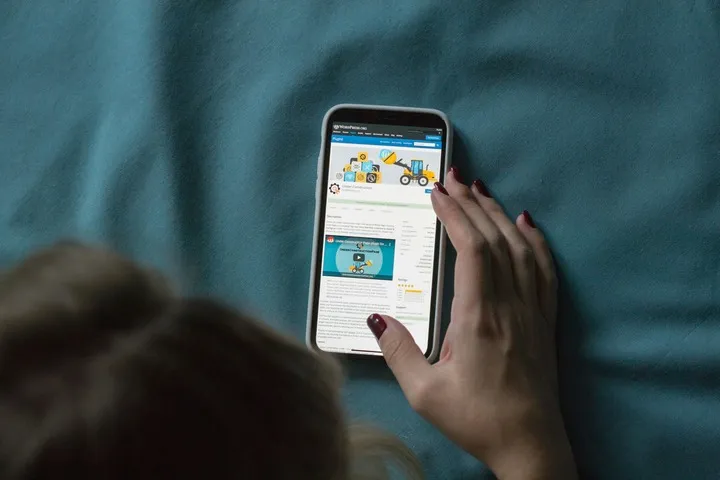Screens of all kinds, including TVs, tablets, laptops, and smartphones, have taken over our lives. We always have screens with us in our daily lives, whether for work, socializing, or leisure. However, how long are we really using our devices for, and what are the consequences?
How Much Time Do We Spend on Our Devices?

According to recent surveys, the average person uses their devices for several hours every day. The average amount of time spent using screens each day across the globe is roughly 6 hours and 37 minutes. People in the Philippines use the internet for an average of 10 hours and 27 minutes every day. This number emphasizes the constant presence of screens in our lives by including time spent on both personal and professional activities.
Generational Differences in Reducing Screen Time
While many of us recognize the need to cut back on screen time for better mental and physical health, achieving this balance can be challenging. According to a survey on limiting tech for mental health conducted by ExpressVPN, there are notable generational differences in how people approach screen time reduction:
Gen Z (born 1997-2012): 46% of Gen Z respondents take measures to limit screen time. However, 28% find it too difficult to reduce their screen usage, and 12% don’t try at all, despite acknowledging that they spend too much time on screens.
Millennials (born 1981-1996): This group shows a similar trend, with 33% effectively limiting their screen time. However, a significant 25% struggle to cut back, and 17% are comfortable with their current levels of usage.
Gen X (born 1965-1980): Around 24% of Gen Xers are comfortable with their screen time, and only 12% limit their usage most days. The remaining portion is divided between those who acknowledge the need to reduce screen time but find it difficult, and those who don’t see it as an issue.
Boomers (born 1946-1964): Boomers appear the most at ease with their digital habits, with 35% feeling comfortable with their screen time. However, 18% still actively limit their usage on all or most days.
These statistics highlight that while there is a broad awareness of the benefits of reducing screen time, each generation faces unique challenges and perspectives on digital consumption.
How to Reduce Screen Time
Reducing screen time is easier said than done, but it’s not impossible. Here are some practical steps you can take to cut back:
- Set Clear Goals: Start by setting realistic and specific goals for your screen time. Whether it’s limiting social media usage to an hour a day or turning off screens an hour before bed, having a clear target can help you stay on track.
- Use Technology to Your Advantage: There are many apps and tools designed to help monitor and limit screen time. Utilize these to track your usage patterns and identify areas where you can cut back.
- Create Screen-Free Zones: Designate certain areas of your home, like the dining room or bedroom, as screen-free zones. This can help reduce the temptation to check your phone or tablet constantly.
- Engage in Offline Activities: Replace screen time with other activities that don’t involve technology, such as reading, exercising, or spending time outdoors.
- Set Boundaries for Work and Social Media: If possible, set boundaries for when you will and won’t check work emails or social media. This can help create a healthier work-life balance and reduce the constant urge to stay connected.
Digital Minimalism
Digital Minimalism is a concept that is gaining traction worldwide as more people seek to declutter their digital lives. The concept, made popular by Cal Newport in his book Digital Minimalism: Choosing a Focused Life in a Noisy World, urges people to utilize technology with intention. Digital minimalists place an emphasis on quality over quantity and only use technology in ways that are consistent with their values and improve their well-being, avoiding to be controlled by continuous notifications, updates, and digital diversions.
As Newport states, “Simply put, humans are not wired to be constantly wired. Digital minimalists see new technologies as tools to be used to support things they deeply value—not as sources of value themselves.”
Digital Minimalism is Becoming a Global Trend
The growing interest in digital minimalism can be attributed to several factors:
- Mental Health: Many people are becoming more aware of the negative impacts of excessive screen time on mental health, including increased stress, anxiety, and feelings of isolation. By reducing digital noise, individuals can create more mental space and clarity.
- Productivity: Constant digital distractions can significantly hinder productivity. By embracing digital minimalism, people are finding that they can focus better, accomplish more, and feel less overwhelmed.
- Personal Relationships: Excessive screen time can take away from face-to-face interactions with family and friends. Digital minimalism encourages more meaningful connections and deeper, more fulfilling relationships.
- Overall Well-being: Reducing screen time allows for more time to engage in activities that promote physical health, such as exercise, outdoor activities, and hobbies that don’t involve screens.
Taking Steps Towards a Healthier Digital Life
Reducing screen time is a worthy aim for anyone hoping to enhance their mental and physical well-being, even though it’s harder than it appears. We can live more balanced, meaningful lives free from the influence of screens by being aware of our digital behaviors and adopting ideas like digital minimalism.